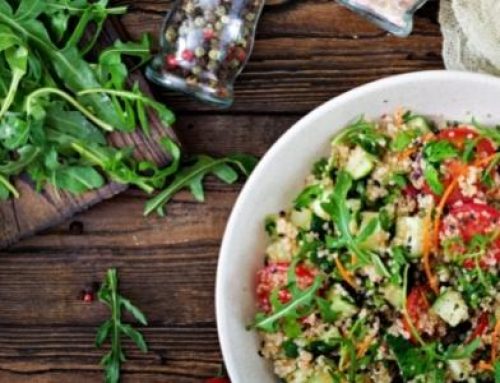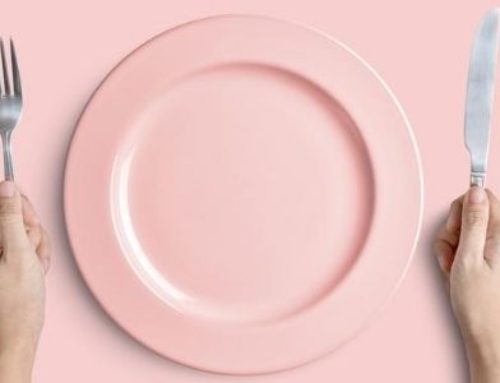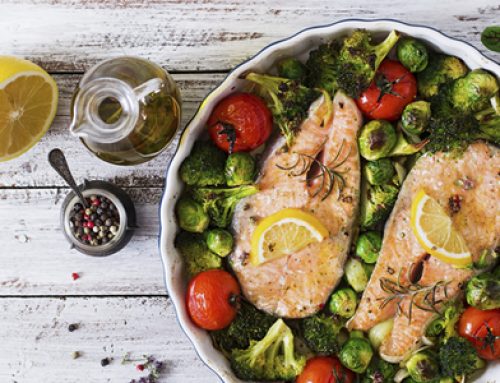 There’s a heck of a lot of mixed messages about carbohydrates online. We have spent most of this month discussing whether you can be addicted to sugar, if fruit sugars are bad for you and asking if we should demonise sugar. Sugar and carbs are a hot topic in the health world.
There’s a heck of a lot of mixed messages about carbohydrates online. We have spent most of this month discussing whether you can be addicted to sugar, if fruit sugars are bad for you and asking if we should demonise sugar. Sugar and carbs are a hot topic in the health world.
Let’s face it, most people haven’t completely removed carbohydrates from their diet. So, rather than add to the Shakespearean bickering about carbs (to eat or not to eat?), let’s presume you still want to enjoy bread and potatoes, and figure out how to eat them in the best way.
Secrets to getting carbohydrates right
There are 2 key nutrition principles that help us to eat carbohydrates in the right way; Glycaemic Index (GI) and Glycaemic Load (GL).
Glycemic Index
You have probably heard the terms ‘Low GI’ and ‘High GI’ being thrown about in the healthy eating space. What does it actually mean?
GI indicates how quickly carbs are digested, absorbed into the blood and then how quickly they leave the blood.
High GI
Simple carb foods are High GI because they’re broken down quickly in the digestive tract, absorbed quickly into the bloodstream and then they are removed from the bloodstream quickly (that’s insulin’s job). Sugars and lollies are a pretty good example of simple carbs and high GI foods.
Low GI
Low GI foods take more effort to digest, which mean that the carbs are absorbed more slowly into the blood. This gives us more steady and sustained blood sugar levels.
Lowering GI
There are 3 things that help to lower the GI of a food; fibre, protein and fat. All three of these take a lot more effort for our body to digest. So, they slow the whole process of digestion down, including carb digestion. Therefore, if we include fibre, protein and healthy fats with our carb foods, we lower the GI of the entire meal.
For example if you have a glass of apple juice and compare it to a whole apple, the whole apple will have a lower GI because it still has all the fibre and pulp in it. If you then pair your apple with some nuts (a source of protein and fat). The whole snack will have a lower GI than the apple on its own. Cool, aye? (I thought so but I’m aware of how nerdy I can be).
Glycemic Load
It sounds sinister! But Glycaemic Load is just the total volume of carbohydrate in your meal:
It’s the difference between 1 potato, 2 potato, 3 potato, or 4 (5 potato, 6 potato, 7 potato, more).
Our body can effectively process and handle carbohydrate. It’s what it’s designed to do. We know that too much of anything is not good. Consistently eating a high glycemic load is essentially asking our pancreas and insulin to work really hard in order to stop our blood sugar levels from creeping up. Even if a food is low GI like basmati rice, if we eat a really large portion, our body still has to work harder than if we ate a small portion.
For people with insulin resistance or Type 2 Diabetes (T@DM), this is like kicking a man when he is down because the body is already struggling with managing blood sugar levels. Interestingly, lowering glycemic load is proving to be one of several tools which can help to improve insulin sensitivity and push T2DM into remission.
So, how do I eat carbs right?
If we want to eat carbs, we absolutely can! But there are ways to do it which are most beneficial for our health; by lowering the glycemic index and being conscious of the glycemic load. Here are 10 ways to make sure carbs are done right in your meals and snacks:
1. Fill your plate with non-starchy vegetables
All fruit and veg contain fibre which will help to lower the GI of your meal. As an added bonus, if your plate is made up of mostly veg, it’s difficult to overeat the carb foods. Load up on leafy greens, carrot, capsicum, tomato, zucchini, mushrooms… the list is long.
2. Check your starchy veg
In an effort to boost the vegetable content of our meals we often rely on the starchy ones, which are high in carbs and don’t end up lowering the GI or the GL. Be conscious of how much potato, sweet potato and corn end up on your plate with your other carb sources (rice, pasta, bread etc).
3. Keep the skins on your potato and sweet potato
The skins of these starchy veg is where a lot of the fibre is found. By keeping the skins on you will lower the GI of the carb food.
4. Choose whole meal, wholegrain or high fibre
Whole meal and wholegrain food products contain more of the outer husk and roughage of the grain, which boosts the fibre content in a big way. Some food products have added fibre from other grains. For example, high fibre white bread often has oat fibre added. All these things help to lower the GI and the GL of the product.
5. Swap juice or dried fruit for fresh
As we mentioned above, the pulp and skin of your fruit lowers the GI, which is why a whole piece of fruit is a better option than juice. The other thing to consider about fruit juice and dried fruit is that they are often more concentrated source of simple carbs. So it is easy to eat a lot more simple carbs, even in small portions, which increases the GL.
6. Have meat (or alternative) in each meal
Having a decent serve of meat or protein rich food with our carbs will help to lower the GI and the GL of the whole meal. Try:
- Adding chicken to a pasta dish.
- Putting ham or cheese on your sandwich/toast instead of jam or honey.
- Have yoghurt with your piece of fruit or blend your fruit with milk to make a smoothie.
7. Hide some vegetables from yourself
This is a personal favourite of mine. I love vegetables and I am happy to have them plain, but there is something satisfying about making a large volume of vegetables disappear into my meal. Dice them, grate them, puree them! It will all help to lower the GI and the GL of your meal or snack. Try these ideas:
- Cauliflower rice or mash.
- Vegetables peeled to add in with spaghetti or fettuccini.
- Sautee mushrooms and then blend them to make a pasta sauce.
- Grate broccoli stalks into your Mexican mince.
- Grate vegetables into savoury muffins and baked goods.
8. Choose vegetable snacks
Non-starchy vegetables are low in carbs so it’s easy to eat a lot without increasing the GL of your snacks. Try packing a handful of snow peas instead of crackers to have with dip in the afternoon.
9. Be conscious of portions
It can be really easy to lose touch of what a healthy portion of carb foods look like. The right portion is different for everyone so it is good to start with a guideline and then decide for yourself if that is enough or too much. 150g grams of cooked carb foods is a good portion and can be a great basis to adjust, based on your needs. Try measuring these out and seeing what they look like on your plate:
- 1 cup cooked rice
- 2 slices of bread
- 2 small wraps or 1 large wrap
- 1 cup of chick peas/lentils/four bean mix
- 1 cup of pasta or cous cous
10. Spread it out
Rather than having a whole day’s worth of carbs in one meal (and a really high GL as a result), spread the carb foods across the day so that you have sustained energy.
If you’d like further help with your nutrition please click below:





